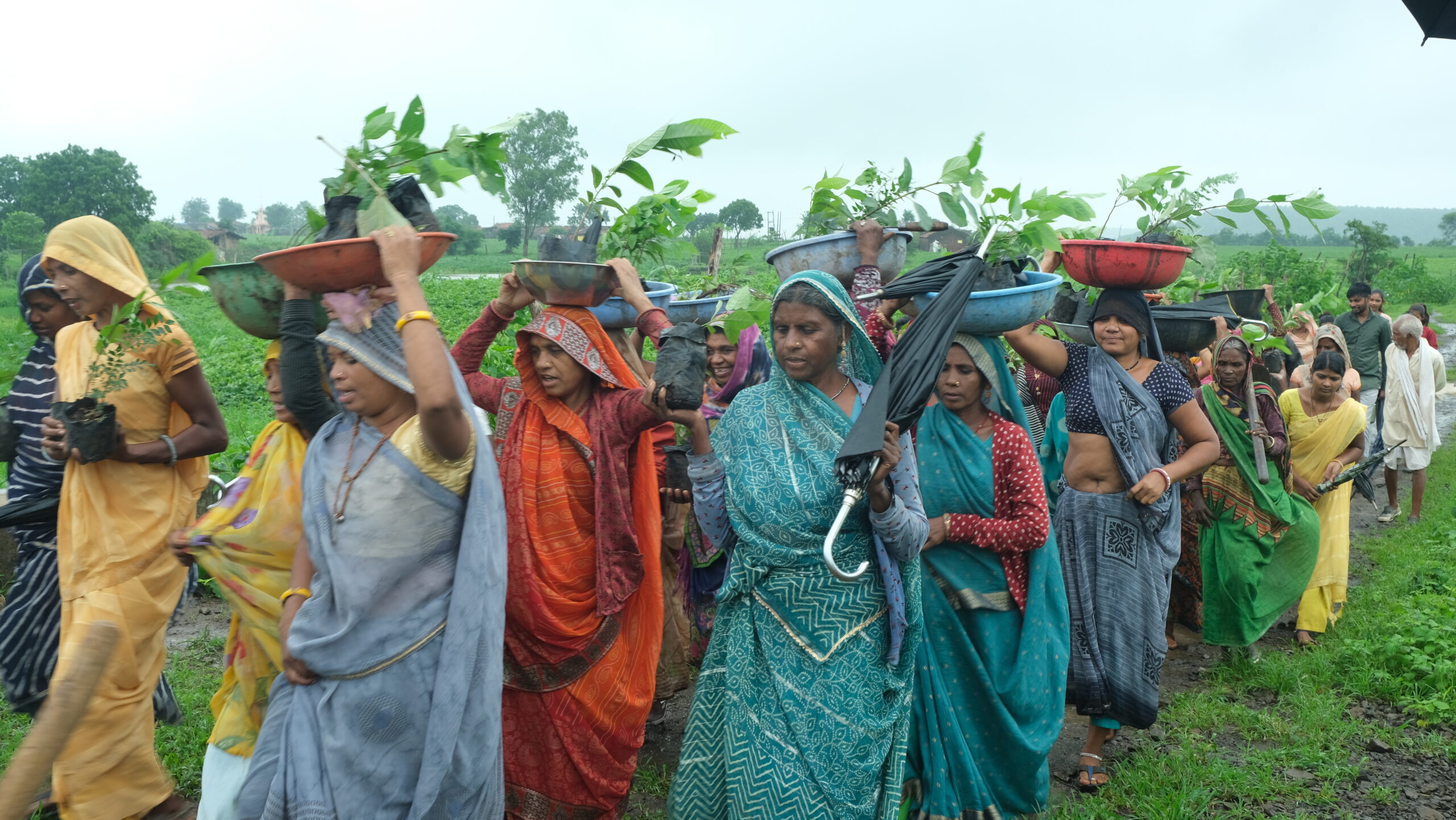In the month of August, the people of Saalkhetiya, Barjhai, Panjariya, and Sovalyapura villages – all situated by the Barjhai forest range –celebrated a festival of sowing seeds and planting trees, spread over different days. They walked to the forests of the Barjhai Ghat, with saplings and seeds in hand, singing songs and bhajans, and playing drums. These villagers were taking part in a plantation drive organised by Samaj Pragati Sahayog (SPS), with the slogan “A Tree in the Name of Our Ancestors”(“एक पेड़ पूर्वजों के नाम पर”), in the course of which they planted more than 300 saplings and around 100 kg of seeds in different parts of the Barjhai forest range: Futa Naka, Sipahi Khudra, Peepal Kundiya, Gola Guthan and TeenDugdi, as well as in the protected forest areas near Saalkhetiya. The seeds belonged to various indigenous fruit varieties like seetaphal (custard apple), ramphal (wild sweetsop), mahua, jamun (java plum), temru (coromandel ebony), imli (tamarind), charoli (cuddapah almond), amla (Indian gooseberry), and bor (Indian jujube). The people collectively pledged to protect the plants and the forests.

Women singing and walking with saplings

musical procession with drums and bhajans
The plantation event, held for the second consecutive year, was planned as a response to the continuing “monkey menace” that the Barjhai region has been experiencing for some years now. Rampant deforestation, the timber trade, and continued human encroachment into the forests (for new settlements as well as expanding homesteads and farm plots by villages in the periphery) have resulted in a massive loss of habitat for the monkeys and other animal inhabitants of the forest. Little wonder, then, that monkeys have increasingly been making their way onto village roads and into settlements – with widespread reports of them tearing up the roofs of homes, and stealing food. The monkeys had grown accustomed to relying on visitors to the Ghat’s Bhairav temple or travellers along the road giving them food for religious or altruistic reasons, and had even started becoming aggressive, attacking people and snatching the food. Awareness programmes were held in the area, and signboards asking people not to feed the monkeys installed at strategic points. But the villagers’ compassion posed a big challenge, as they kept asking, “What will the monkeys eat if we don’t give them food?" The plantation festival was seen as a solution – to plant fruiting trees in the forest and protect them as they grew, so that the monkeys would have natural food sources in their own habitat.
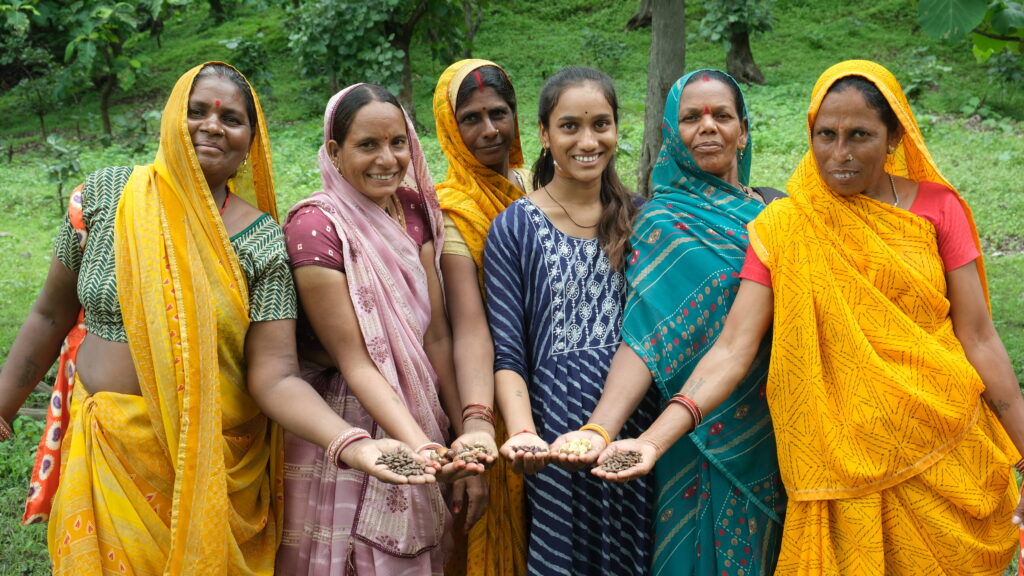
Women showing seeds
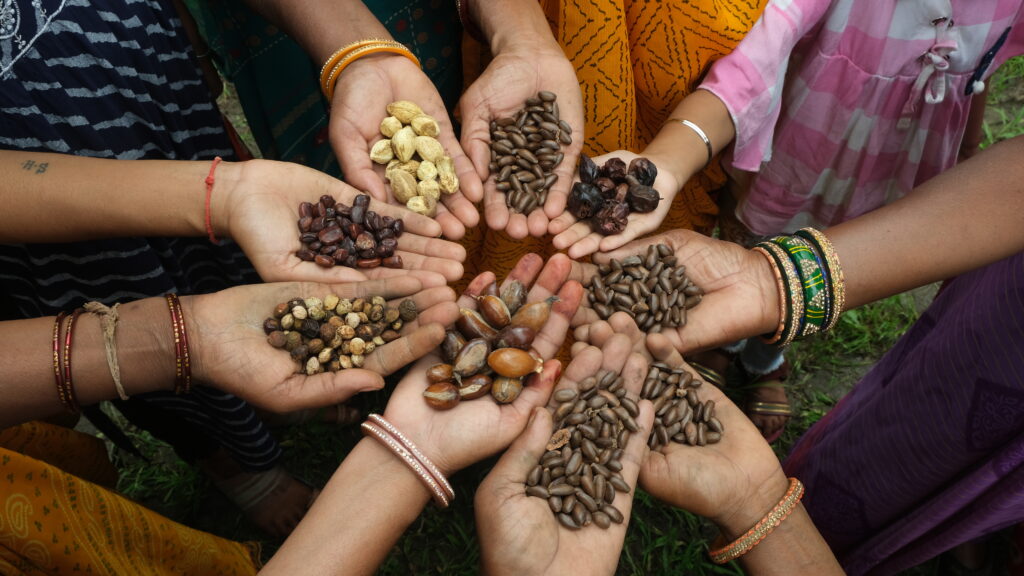
different varieties of seeds
As part of the Vindhyachal mountain range, the Barjhai Ghat acts as a natural catchment area that feeds innumerable streams and rivulets into the Narmada River, as well as recharging the groundwater in the valley, which has around a hundred villages. In this way, it has become an essential water source for people living here, while contributing to the region’s rich ecology. However, with rapid deforestation in recent years, combined with the general indifference of the local people, including indigenous communities, the campaign was not only an important initiative by SPS, it also spontaneously connected with the sentiments of locals. The villagers who have been witnessing the forest’s rapid depletion have simultaneously been losing a significant source of livelihood in the form of minor forest produce, such as mahua, tendu leaves, and other varieties of edible wild food. The monkey issue, too, resonated with their struggle, as the menace had reached many of the villages by the main road. And in an attempt to inculcate a strong sense of responsibility towards forest conservation, the idea of planting trees in the name of ancestors was adopted from the traditional practice of the indigenous Korku, Bhilala and Silvi communities. Although these communities had been planting trees in memory of departed family members, the practice had been on the decline as many families migrated to urban centres.
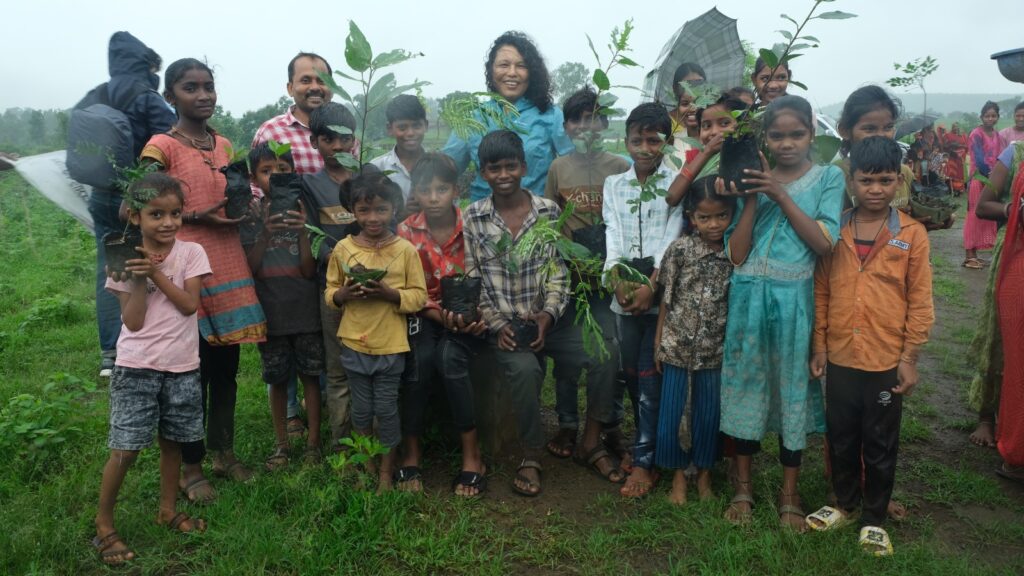
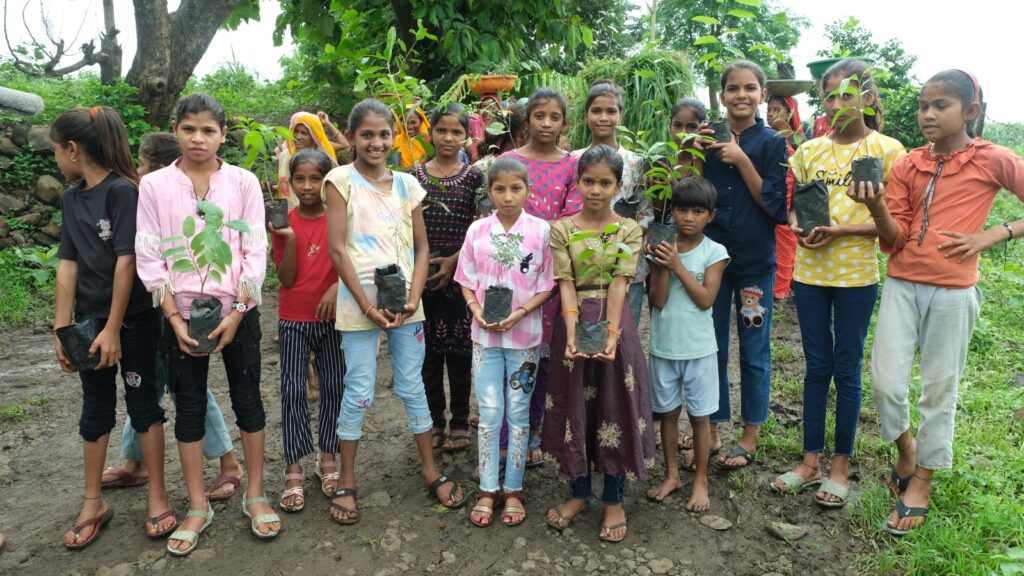
people headed to the forest to plant saplings and seeds
Planting trees in the name of ancestors was appealing, and a festive atmosphere prevailed. People sang, played drums, and danced on their march to the forest areas. A “Triveni” – a triumvirate of neem, peepal, and banyan trees – was planted in Kota Naka, where the old neem tree was drying up. In Peepal Kudiya, the children ran off to the river and played in the waters, as an old flute player from the village sat on the shore and played tune after soothing tune, creating a serene mood as the plantation activity progressed. In Teen Dugdi, while other participants posed for group photographs, some men sat together on a hill and sang bhajans, accompanying themselves on drums and taals (mini-cymbals). Throughout the event, seed bags designed and made by the women of Kumbaya[1] Throughout the event, seed bags designed and made by the women of Kumbaya were gifted to the villagers. Indigenous seeds and plants were chosen because varieties that occur naturally and have evolved in the region survive better, besides being climate-resilient. Moreover, these varieties make for ecologically sound choices as they support not only humans, birds, animals, insects, but even other plant species around them. Fruiting trees were planted so that monkeys and other animals could find food inside the forest.
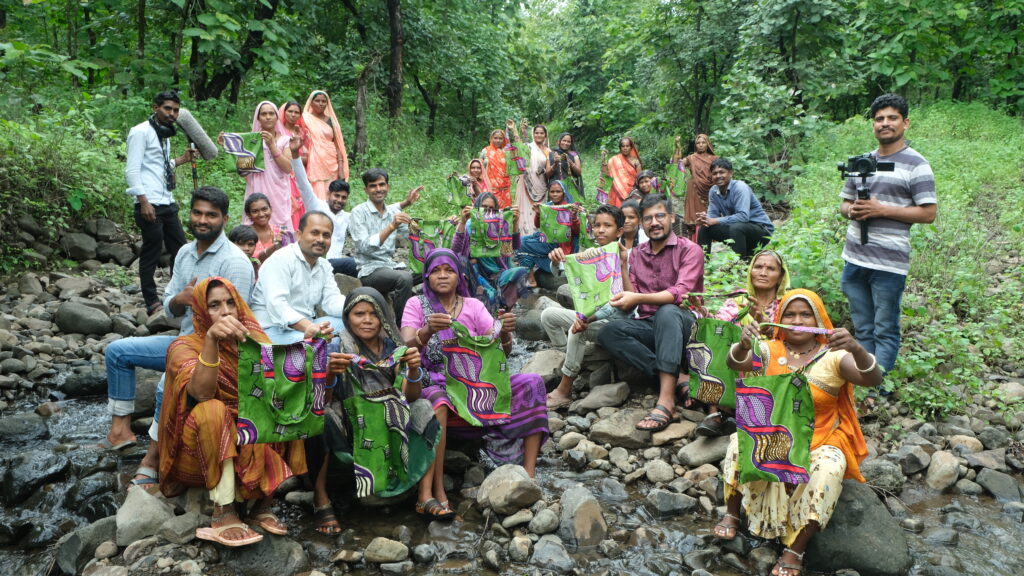
women with the Kumbaya bags
While planning the festival, the organisers had consulted experts like Sukhram Baghel from the SPS Agriculture Programme. People were guided as to the proper methods of planting and seed sowing for specific plants: sowing only one mahua seed per hole as the seeds were already big and sprouted, and also because mahua trees grow large; sowing two to four seeds in each hole for varieties such as seetaphal, charoli, amla. A distance of 5-10’ was maintained between the ground holes so that all the trees, with their different root and canopy space needs, would have enough room to grow and flourish. People were cautioned against allowing their animals into the newly planted areas for grazing. Although “Grazing Not Allowed” boards had been set up during last year’s plantation drive as well, Rabindra Barik of SPS speaks of how people agree to abide by the rules when you speak to them, but they don’t always keep to their word. Therefore, better protected areas with fences and borders were chosen for the plantation drive, and the organisers expect an almost 100% survival rate this time.
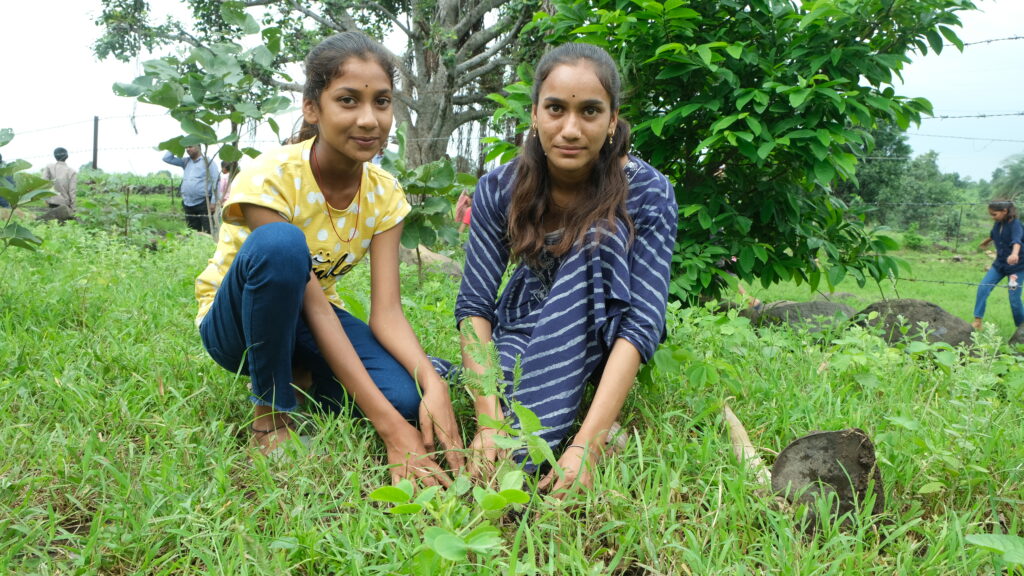
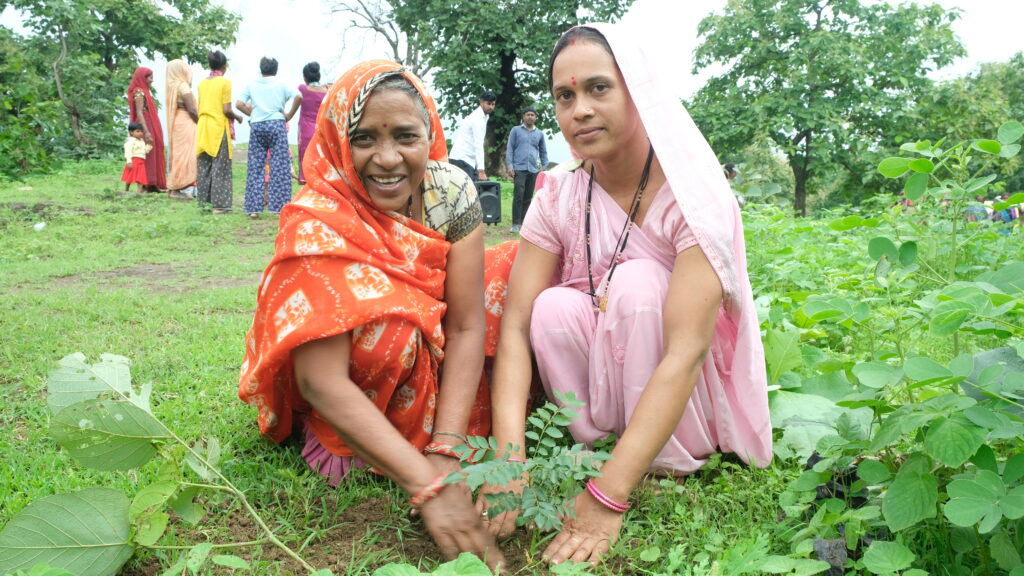
Planting saplings and seeds
Dalbaati, rice, sweets, cold water to drink, and water to wash their plates were provided at all venues for everyone on planting days. In Peepal Kudiya, sabudana khichdi and bananas were distributed instead, as it was a Monday – on which most people from there observe a fast.
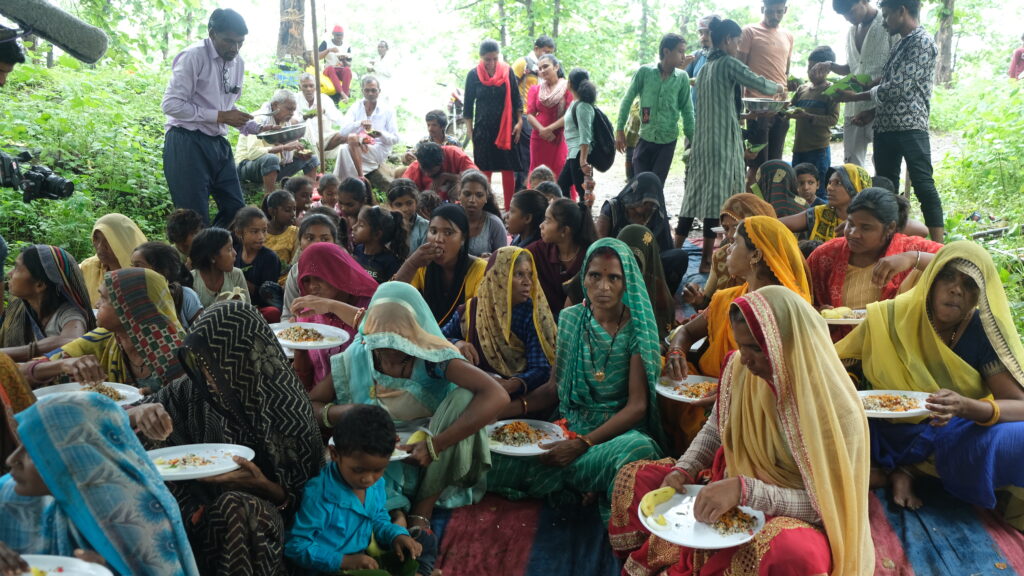
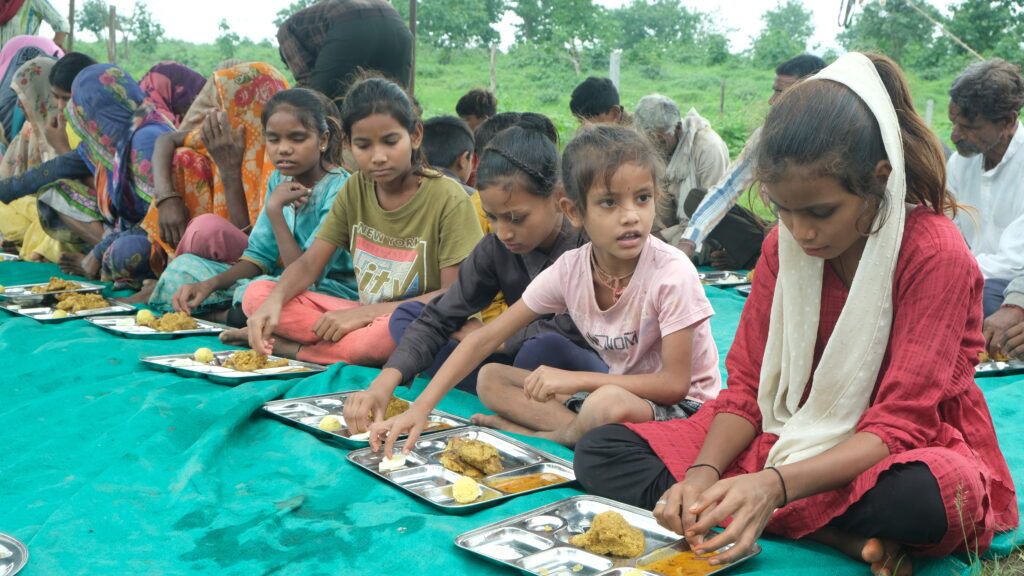
Meal time
Sustained dialogue and discussions over the years have been able to bring various stakeholders on board for the greening of the Barjhai forest. The village women’s Self-Help Groups (SHGs) have been extending support through the Hissedari Sabhas[2]The Forest Department has been very supportive,engaging whole-heartedly with the campaign. The plantation site at Saalkhetiya is inside their protected, fenced boundary, and the Department has promised to allow the villagers the rights to the non-timber produce. Forest Ranger Gajanand Birla, Forest Guard Ram Nival Kalam, and their team were active participants throughout. Panchayat heads Sarpanch Rekha Bai Karma of Barjhai and Sarpanch Annu Bai of Sovalyapuralent their full support, and joined in the proceedings. Bagli MLA Murali Bhanwara also graced one of the four events, and vowed to support the campaign to protect the forest. The event, jointly organised by the Bagli Pragati Samiti (BPS), Punjapura Pragati Samiti (PPS), and SPS Community Media,[3]was guided by Pinky Brahma Choudhury, while its implementation was led by Rabindra Kumar Barik, both from SPS Community Media. BPS and PPS heads Jitendra Birla and Dharmendra Rajawat and their teams, along with the SPS Community Media team, helped with the dialogue in the villages as well as withthe organising. Shobhit Jain, Secretary of SPS, and Murlidhar Kharadia, head of the SPS Watershed programme, also helped in initiating dialogues with both the villagers and the Forest Department to work out a plan to regulate the protection of the forest as well as for the village peopleto be able to reap the benefits of the minor forest produce.
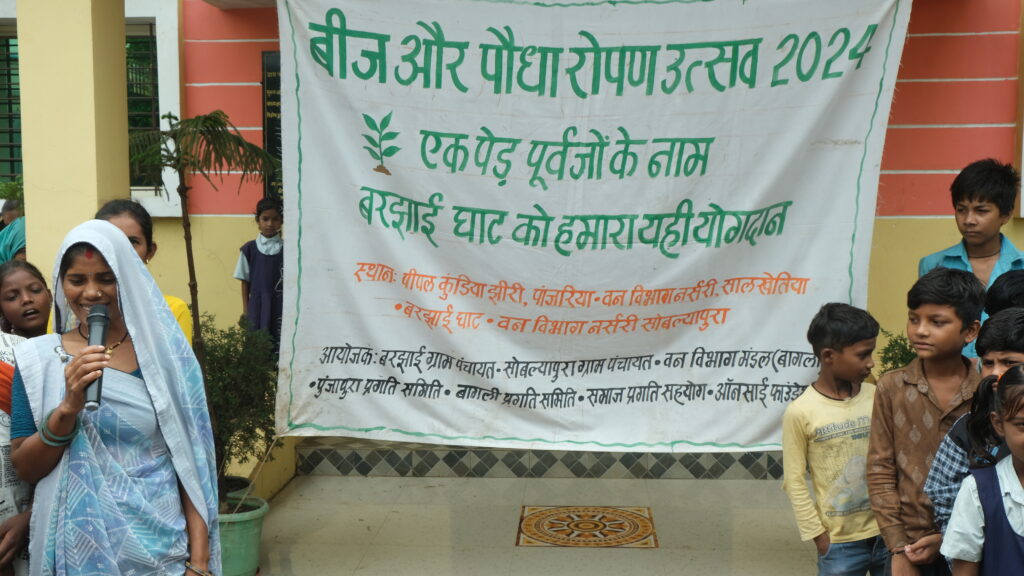
Barjhai Sarpanch Rekha Bai Karma delivering a speech
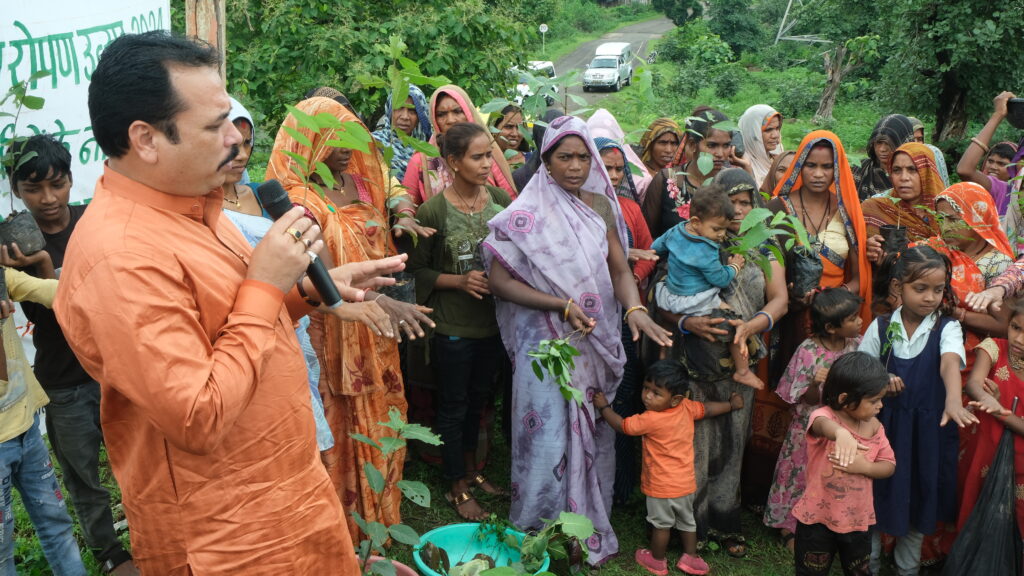
Bagli MLA Murali Bhanwara reciting the collective vow
The festival inspired a huge response. Given its success, the future of the local forests looks hopeful, as participants now feel an emotional and spiritual bond with the saplings and seeds they planted – a bond firmly rooted in the local culture.
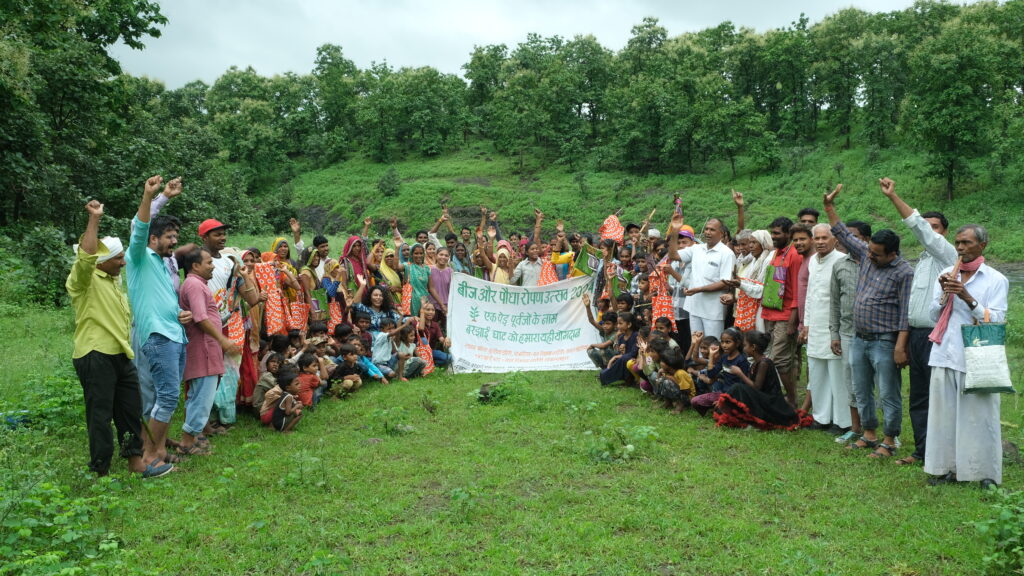
SPS members and village people
[1] Kumbaya is a social enterprise that empowers poor women and people of disability with the art of stitching. It is a brand name for apparel, patchwork, home linen and accessories made with dead stock and textile waste. Started by Samaj Pragati Sahayog (SPS) in 1994, it is now a Producer Company owned by the artisans. For the last 30 years, Kumbaya has been standing up for the right to paid work, seeking to transform and strengthen women's lives through the power of design.
[2] meetings organised by members of Self Help Groups (SHGs) to discuss various issues of concern for their villages – such as access to drinking water, PDS shops, toilets, pension schemes, PM Awas Yojana, etc.
[3] SPS Community Media is a full-time media production unit, translating SPS ideas, practices, and experiences into films, art, and audio stories in an interactive partnership with the community. The core team comprises people from the area.
writing: Avinash Denduluri
source: Rabindra Kumar Barik
Photography: Abhishek Chouhan
Text Editing: Smriti Nevatia
Guidance: Pinky Brahma Choudhary
Page Layout: Roshani Chouhan

